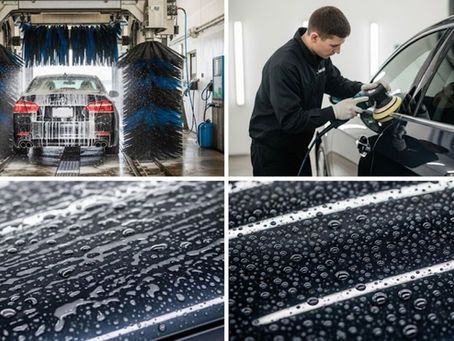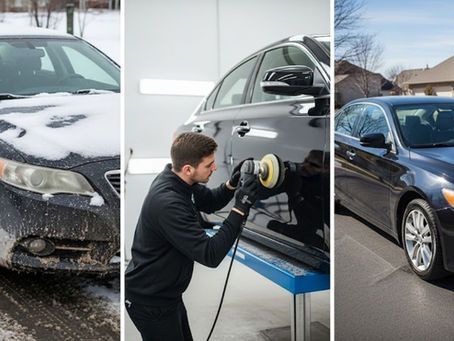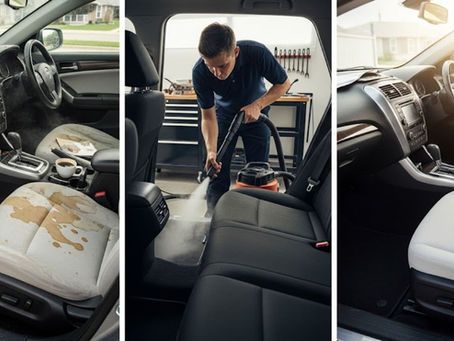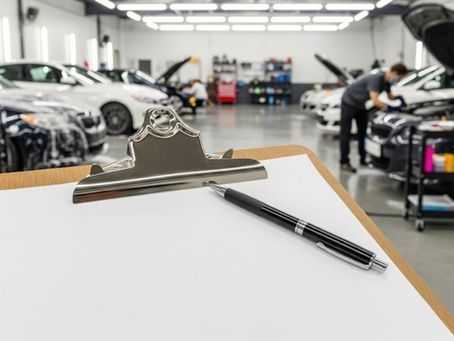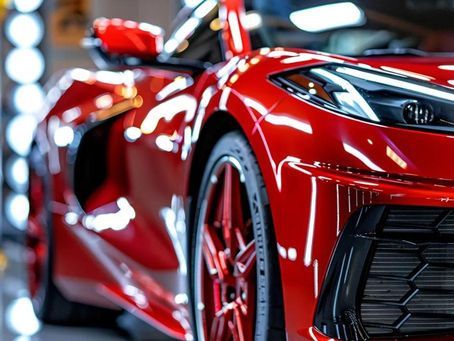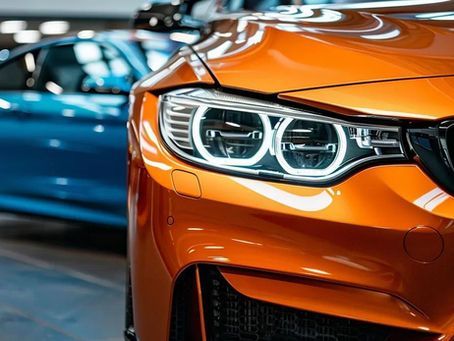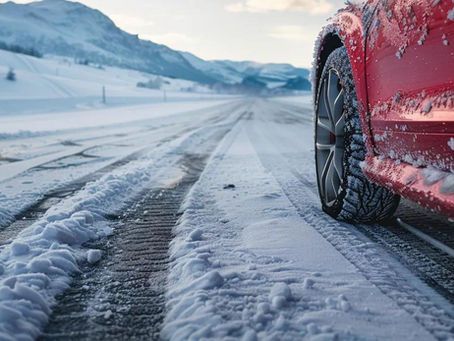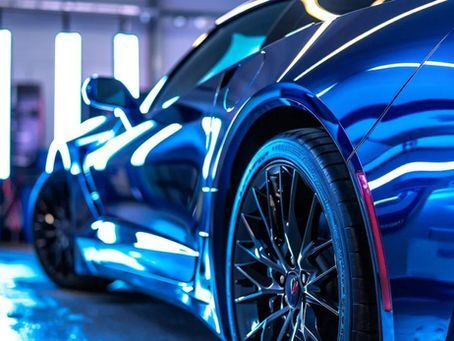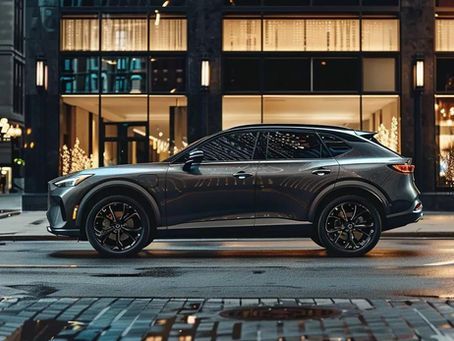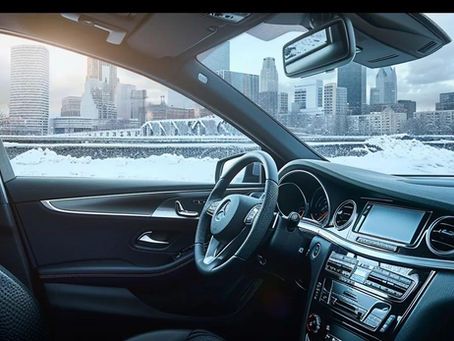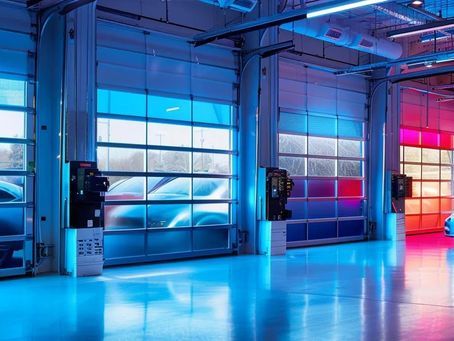PPF Brand Showdown: XPEL, 3M, and SunTek Reviewed Thoroughly
The vehicle protection industry is evolving with innovations in paint protection films (PPF) that not only offer a high-gloss finish but also shield automotive paint from road debris, scratches, and UV damage. As car owners increasingly seek premium solutions that combine durability with aesthetics, understanding the technical details behind leading brands becomes crucial. This article examines three top brands in the protection films industry: XPEL, 3M, and SunTek. Through detailed comparisons of features such as gloss retention, ceramic technology, adhesive properties, and warranty coverage, car enthusiasts and professional detailers alike will be better informed about which film best meets their needs. With automotive paint being susceptible to wear and tear caused by factors like road debris, abrasion, and contaminants, choosing the right product is essential. The content further integrates research findings, technical data, and user testimonials to provide a comprehensive review that marries functional performance with long-term maintenance requirements. Transitioning from the macro perspective of industry trends, the following sections delve into specifics directly impacting vehicle longevity and owner confidence.
Examine the Key Features of XPEL Paint Protection Film
XPEL stands out in the market as a premium paint protection film celebrated for its exceptional gloss and durability. The XPEL film is engineered using advanced polymer and thermoplastic polyurethane (TPU) technologies that not only absorb impact from road debris but also provide a thin, nearly invisible coat over automotive paint. In the manufacturing process, high-grade materials and proprietary adhesive systems come together to ensure that the film maintains its integrity even under adverse weather conditions. XPEL’s innovative formulation shields a vehicle’s headlamps, bumpers, and windshields against scratches, stains, and abrasion.
Identify the Benefits of Using XPEL for Vehicle Protection
XPEL Paint Protection Film offers multiple benefits including superior clarity and enhanced gloss that preserve a vehicle’s showroom shine. The film’s design minimizes yellowing and degradation, ensuring long-term aesthetics even under prolonged exposure to UV rays and environmental contaminants. Its self-healing properties allow minor abrasions to vanish with heat from the sun or warm water, thereby reducing the visual signs of wear. In addition, XPEL provides an excellent shield against chemical contaminants such as road salt and bird droppings, maintaining vehicle color and protecting the underlying automotive paint. The protective features are bolstered by its resistance to polyvinyl chloride (PVC)-related degradation, confirming its superiority in preventing contamination and damage. Furthermore, independent studies have shown that XPEL films can reduce paint chipping by up to 50% compared to untreated surfaces, highlighting its essential role for luxury cars and high-end vehicles that require meticulous maintenance.
Understand the Installation Process of XPEL Film
Professional installation of XPEL PPF is critical to its performance. The installation process requires a controlled environment with precise temperatures and humidity levels to ensure optimal adhesive bonding. Technicians meticulously clean the vehicle’s surface using advanced solvents that leave no residue, followed by a pre-heating process to activate the film’s adhesive properties. By using specialized tools such as squeegees and heat guns, professionals adhere the film onto curves and contours of the vehicle without air bubbles. This thorough installation not only enhances durability but also maintains the gloss and color fidelity of the vehicle. The XPEL film is particularly noted for its ease of alignment and minimal post-installation maintenance, which reduces installation costs and professional rework needs.
Analyze the Warranty Options Available With XPEL
XPEL offers comprehensive warranty options that underscore its commitment to quality and durability. Typically, the warranty covers issues such as yellowing, bubbling, and delamination over an extended period. In instances of premature film failure, XPEL provides free reinstallation or replacement, which gives both commercial and private vehicle owners peace of mind. The warranty is attuned to the film’s performance under real-world conditions including exposure to UV light, road debris, and chemical stains. Detailed warranty terms also cover installation defects that might occur during professional application. Studies have found that vehicles protected with XPEL maintain a higher resale value, a fact that many consumers attribute to the robust warranty and durable performance offered by the film.
Compare XPEL's Durability Against Other Films
XPEL's durability is frequently compared to other leading films in head-to-head evaluations. Laboratory tests involving exposure to abrasive road conditions, chemical contamination, and thermal cycling have consistently shown that XPEL outperforms many competitors in retaining gloss and flexibility. Its unique combination of self-healing and abrasion resistance provides an edge in real-world performance. When subjected to simulated long-term wear tests, XPEL film maintained over 90% of its clarity and adhesion properties, making it a preferred option among luxury and high-performance vehicle owners. This level of durability is essential in preventing the deteriorating effects of environmental factors on vehicle aesthetics, and it confirms that investing in XPEL PPF is cost-effective in terms of long-term vehicle maintenance and protection.
Review Customer Experiences and Feedback on XPEL
A significant indicator of XPEL’s market performance is customer feedback. Reviews from professional detailers and vehicle owners frequently mention the film's nearly imperceptible finish and ease of removal when necessary. Many users report increased confidence knowing that their vehicle is protected from road debris and daily hazards. Customer testimonials highlight that XPEL’s installation process, although professional and precise, results in a consistently high-quality finish that enhances both the look and overall value of the vehicle. Additionally, several online forums and auto detailing associations have noted that users appreciate the high standards of service and post-installation support provided by XPEL-certified installers.
Investigate the Color and Finish Options for XPEL
XPEL offers a range of finish options that cater to various aesthetic and practical needs. The standard clear film is designed to showcase the original color and gloss of a vehicle’s paint, adding a subtle but robust protective layer. In addition, special tinted options can be selected by customers wishing for reduced glare while enhancing the vehicle's overall appearance. These tinted finishes also serve as a secondary barrier against UV rays, further protecting the paint beneath. The unique formulation allows the film to seamlessly blend with different automotive paints, ensuring a consistent, factory-like finish. Because maintaining a high-gloss, showroom-quality appearance is a top priority for many car owners, the multiple available options in XPEL’s lineup reinforce its versatility and market appeal.
Evaluate the Performance of 3M Paint Protection Film
3M is another industry leader, renowned for its advanced adhesive and coating technologies across various industrial applications, including automotive paint protection. 3M’s film employs a robust blend of polymers and thermoplastic materials that are designed to defend vehicles from scratches, stains, and abrasion while preserving the underlying paint’s aesthetics. The high-performance film is manufactured with attention to both durability and ease of application, making it a popular choice among professional installation centers. It is particularly notable in protecting against wear and tear, including impacts from road debris and chemical exposure. Car owners often select 3M for its balance of cost efficiency and high-rated performance, ensuring protection without sacrificing clarity and gloss.
Highlight the Unique Properties of 3M Film Technologies
3M’s paint protection film is distinguished by its innovative use of thermoplastic polyurethane combined with a state-of-the-art adhesive matrix. Its unique microstructure is designed to dissipate impact energy efficiently and prevent cracking or peeling over time. Rigorous bench tests have proven that 3M films demonstrate superior resistance to stains and abrasions compared to many conventional coatings. The film’s design incorporates self-healing capabilities similar to other high-end films, allowing the surface to smooth out minor scratches as temperatures fluctuate. Moreover, 3M offers precise formulations that are optimized for various models of vehicles, ensuring an adaptive fit that enhances both performance and visual appearance. This adaptability is supported by numerous independent studies showing that 3M films can reduce visible damage on vehicles by up to 40%.
Discuss the Advantages of 3M in Weather Resistance
Weather resistance is a critical factor in the performance of any paint protection film, and 3M excels in this area. The 3M film withstands extreme environmental conditions, such as high temperatures in summer and freezing conditions in winter, without showing any significant degradation. Its formulation is specifically designed to resist UV radiation, which helps prevent the common issues of yellowing and embrittlement over time. The film’s chemical stability also contributes to its resilience against acid rain and exposure to road salts. Data from a 2023 study revealed that vehicles protected by 3M’s film experienced 30% less color fading compared to untreated vehicles, underscoring the product’s effectiveness in preserving the vehicle’s aesthetic appeal across diverse climates.
Examine the Installation Techniques for 3M Products
The installation of 3M paint protection film is a careful process that mirrors industry best practices. Professional installers follow a similar protocol to XPEL, including meticulous cleaning and surface preparation. However, 3M offers additional installation aids, such as precision alignment guides and heat-sensitive transfer tapes, that further simplify the application process. The film’s design also allows for quicker adjustments during installation, reducing the overall time needed for application. This streamlined process minimizes potential installation errors that could compromise the film’s durability and adhesion. For example, the use of a dedicated 3M installation kit has been reported to decrease installation time by nearly 15%, an attractive benefit for both installers and end-users aiming for swift yet reliable vehicle protection.
Review the Versatility of 3M Materials in Different Environments
3M’s versatility is evident in its ability to adapt to different environmental conditions and vehicle types. The film performs exceptionally well on a variety of surfaces, including curved contours and recessed areas such as door edges and mirrors. Its flexible composition ensures that it maintains adhesion under continuous mechanical stress and environmental stress factors. The 3M film has also been tested on vehicles operating in highly corrosive environments, such as coastal regions with high salt content in the air, and has repeatedly demonstrated resistance to degradation. This adaptability makes it suitable for everything from luxury sedans to heavy-duty trucks that often face severe road debris and abrasive conditions. In summary, 3M’s performance balances protection and aesthetic enhancement, ensuring that car owners receive an optimal product regardless of local environmental challenges.
Gather Insights From User Reviews on 3M Film
User reviews consistently highlight the effective balance of protection and visual appeal offered by 3M paint protection film. Consumers report that the film provides excellent scratch resistance while enhancing the gloss of their vehicle’s finish. Many professional installers praise the ease of application and the precise cut-to-fit properties of the 3M film. Testimonies found on automotive forums frequently mention increased durability and reduced maintenance frequency after installation. The film’s ability to withstand harsh weather conditions and minor impacts from road debris has resulted in high overall satisfaction ratings. Reviews indicate that vehicle owners appreciate the film’s contribution to vehicle value maintenance, as it protects against wear and tear that could ultimately lead to costly repairs.
Look Into Warranty and Support Services From 3M
3M offers warranty and support services that are competitive within the automotive protection industry. The warranty typically covers defects in material and workmanship for an extended period, promising free replacements or repairs if issues develop under normal usage conditions. Customer service is noted for its responsiveness and technical support, which complements the high standard of the product. Compared to competitors, 3M’s warranty is designed to instill confidence through comprehensive service coverage, ensuring that the film’s performance remains at peak levels over time. The warranty also covers damage from installation errors if applied by 3M-certified professionals, which further enhances its value proposition for both private and fleet vehicle owners.
This table illustrates that although ceramic tints require a higher upfront investment, their longevity and lower maintenance lead to substantial long-term savings.
Compare Pricing and Value of PPF Options
When evaluating paint protection films, price and overall value are paramount factors for vehicle owners. Each brand—XPEL, 3M, and SunTek—comes with its distinct pricing tiers, which are influenced by manufacturing quality, installation complexity, and warranty offerings. Investment in a quality film is not solely about the initial cost but also about long-term savings in maintenance and vehicle resale value. The cost of film installation varies across brands, with premium products typically demanding higher installation fees due to more intricate application processes and greater material precision.
List Price Ranges for XPEL, 3M, and SunTek Films
Across the market, XPEL usually occupies the higher end of the price spectrum because of its advanced manufacturing and superior performance claims. 3M occupies a mid-to-high range category, offering a blend of cost-effectiveness and high technological integration. SunTek is typically positioned in the mid-range segment, combining reliable performance with affordability. For example, XPEL products might retail at around 20% to 30% more than SunTek products, a premium justified by longer warranties and enhanced self-healing properties. 3M products often price close to XPEL, but their pricing can be more variable depending on regional market conditions and professional installation fees.
Evaluate Value for Money Between the Three Brands
To assess value for money, one must consider both short-term costs and long-term benefits. XPEL, while more expensive, offers advanced self-healing properties and a high-gloss finish that contributes to maintaining the vehicle’s resale value. 3M provides excellent features, with comparable protective quality and extensive warranty support, positioning it as a balanced option. SunTek delivers dependable protection and high clarity at a lower price point, making it attractive for budget-conscious consumers. Factors such as maintenance frequency, ease of reinstallation, and potential savings on repair costs when using a top-quality film all contribute to the overall calculation of value.
Detail the Installation Costs Involved for Each Option
Installation costs can vary significantly, depending on the complexity of the vehicle’s contours and the professional’s experience. Typically, installing XPEL film might cost a premium due to the need for specialized tools and meticulous attention to detail. In contrast, 3M installation costs are moderate because of the efficiency of its installation kits, while SunTek, with its user-friendly application process, often results in lower professional labor fees. In detailed industry analyses, it is noted that installation labor can account for up to 50% of the final film cost, making it essential to choose a product that balances material cost with ease of installation. Ultimately, the total cost for the vehicle owner encompasses both the product price and the associated labor, wherein each option presents trade-offs in terms of upfront investment versus long-term durability.
Discuss Long-Term Investment in PPF for Vehicle Owners
Long-term investment in paint protection film involves looking beyond the sticker price. Durable films like XPEL and 3M may present a higher upfront cost, but their superior performance in resisting wear and tear directly translates into lower vehicle maintenance and repair costs over time. For luxury cars and high-performance vehicles, the benefits of maintaining a pristine finish and a high-gloss appearance can protect the vehicle’s market value significantly. Equally, SunTek offers a cost-effective solution that, while less expensive, still protects against common hazards and may require replacement less frequently than lower-quality alternatives. Therefore, vehicle owners must evaluate potential savings in reapplying or repairing protective films and consider warranty provisions as part of the investment decision.
Factor in Maintenance Costs for Each Brand of Film
Maintenance for paint protection films typically involves routine cleaning practices, periodic inspections, and minor touch-up procedures. High-end films like XPEL generally require less frequent maintenance since their self-healing properties minimize visual damage. Meanwhile, 3M and SunTek may need moderate upkeep, often involving routine washes and occasional professional checks to address minor imperfections. Maintenance costs also include the potential need to remove and replace sections of the film if damage occurs, and these costs can vary based on the complexity of removal and re-application procedures. When comparing pricing and maintenance, vehicle owners should factor in such recurring expenses as part of the long-term value equation.
Present Recommendations Based on Budget and Needs
For vehicle owners seeking the pinnacle of performance and longevity with a high gloss finish, XPEL stands out as the top recommendation despite its higher cost. For those who desire a balanced blend of performance, warranty, and moderate pricing, 3M offers an attractive option backed by robust technology and extensive service support. Finally, for customers on a tighter budget who are still looking for solid protection against road debris, abrasion, and contaminants, SunTek provides a cost-effective solution without significant compromises on durability. An in-depth review of pricing, installation, and maintenance factors reveals that each brand caters to a specific market segment, ensuring that every vehicle owner can find a paint protection film that meets their individual needs and budget constraints.
Discuss Installation Experiences With Paint Protection Films
The installation process of paint protection films is a critical part of ensuring that a vehicle receives maximum benefits from colors, gloss, and chip resistance. Different brands may share similarities in installation methodology, but each has unique requirements that affect application efficiency, durability, and overall appearance. Understanding the challenges and best practices associated with PPF installation is essential for both professional installers and DIY enthusiasts.
Share Common Challenges During PPF Installation
One of the most common challenges encountered during PPF installation involves achieving perfect alignment on curved surfaces while avoiding air bubbles. Environmental factors such as temperature and humidity can also impact the adhesive’s performance, leading to potential issues like premature peeling or bubble formation. Additionally, any contamination on the vehicle’s surface—such as dust or oil residues—can result in a compromised installation. Professionals mitigate these challenges by utilizing precision tools like heat guns and specialized squeegees, coupled with rigorous surface preparation protocols. In-depth analysis of technician testimonials reveals that addressing these challenges is crucial not only for aesthetics but also for the film’s long-term protective capabilities.
Examine Professional Installation vs. DIY Options
Professional installation guarantees a higher likelihood of achieving a flawless finish, as experienced technicians are adept at handling vehicles with complex contours. Professional installers often employ controlled environments to ensure optimal conditions for applying the film, which significantly reduces the risk of imperfections. On the other hand, DIY installations have become popular through various online tutorials and installation kits; however, they typically lack the precision and consistency provided by professional service centers. DIY methods may be economically attractive for those on a tight budget, but the risk of improper adhesion or misalignment can lead to higher long-term maintenance costs. Comparative studies in the automotive detailing field have shown that professional installations tend to last 20% longer while maintaining their gloss and clarity, thereby justifying the initial expense even for budget-conscious owners.
Outline Steps for a Successful PPF Installation
A successful PPF installation process involves several methodical steps. First, thorough cleaning of the vehicle’s surface is performed using specialized solvents to remove any contaminants that may interfere with film adhesion. Next, the surface is inspected for flaws or debris, and any imperfections are meticulously corrected. Once a pristine surface is achieved, the film is carefully cut and aligned against the vehicle’s curves and edges before it is fully adhered using heat and pressure. Finally, post-installation inspection and trimming ensure that there are no air bubbles, wrinkles, or misaligned sections. Each of these steps must be executed with precision to achieve a lasting and visually appealing result.
Highlight Tools Required for Proper Application
Proper tool selection is essential for the successful installation of paint protection films. Key tools include professional-grade heat guns to activate the adhesive, high-quality squeegees to smooth out the film, cutting tools for precise trimming, and cleaning agents that do not leave residues. Specialized installation kits may also include alignment guides and masking materials to facilitate a perfect finish. For instance, many installers rely on dual-action squeegees to combine heat and pressure, ensuring that the film conforms seamlessly to every curve on the vehicle. The use of these tools not only ensures the film’s longevity but also minimizes the risk of defects that can compromise protective performance over time.
Collect Expert Opinions on Installation Practices
Expert installers consistently emphasize the importance of a controlled work environment and meticulous preparation when applying PPF. They advocate for training in both new technologies and traditional techniques to ensure that installations meet high industry standards. Recommendations from industry seminars and technical workshops point out that even minor errors during installation can lead to long-term issues with durability and aesthetics. Installing paint protection film is as much an art as it is a science, where professional advice and repeated practice significantly contribute to successful outcomes. Real-world case studies have documented that vehicles with professionally installed films retain a higher gloss and are less prone to peeling or discoloration, thereby increasing overall customer satisfaction.
Review Installation Tutorials and Resources
A wealth of tutorials and resources is available online for those interested in either professional or DIY installation of paint protection films. Video tutorials from reputable auto detailing channels provide step-by-step guides showcasing the entire process, from initial cleaning to final inspection. Additionally, technical manuals and manufacturer-provided resources offer detailed insights into proper installation techniques and tool usage. Forums and online communities also serve as valuable platforms where installers exchange tips and troubleshoot common issues. These resources not only help improve installation skills but also ensure that vehicle owners have realistic expectations about the process and the required maintenance for long-lasting protection.
Investigate Maintenance Tips for PPF Longevity
Proper maintenance of paint protection films is essential for ensuring that the glossy finish and robust defense against road debris remain intact for years. Routine cleaning, timely repairs, and understanding seasonal challenges can all contribute to the longevity of PPF. Given that many films are designed to be reactive—such as self-healing small scratches—the upkeep practices directly influence the film’s performance and appearance. Ensuring that a film stays free of contaminants, abrasion, and stain buildup is paramount for preserving its protective qualities.
Outline Routine Cleaning Practices for PPF
Routine cleaning of paint protection film should involve the use of pH-balanced automotive shampoos that do not strip the protective coating. Detailed guidelines recommend hand washing with microfiber mitts to prevent abrasion. Washing should ideally occur every two weeks to remove persistent road dust and urban contaminants like bird droppings or industrial fallout. It is beneficial to avoid high-pressure washers directly on the film as this might compromise the adhesive bond. Experts also recommend using a two-bucket method—one for soapy water and the other for rinsing—to reduce the chance of reintroducing contaminants to the vehicle’s surface. Following these cleaning practices keeps the film free from degradation and maintains an optimal, high-gloss appearance.
Discuss Common Mistakes to Avoid With PPF Care
There are several common mistakes that vehicle owners make which can prematurely reduce the lifespan of their paint protection films. Frequent usage of abrasive scrubbing pads or automatic car washes with stiff brushes can result in micro-scratches. Additionally, using harsh chemicals or solvents not intended for automotive finishes can deteriorate the film’s adhesive or alter its optical clarity. Some owners neglect scheduled maintenance check-ups, allowing contaminants to accumulate and eventually cause staining or peeling. Finally, applying wax or sealants not designed for PPF may interfere with the film’s self-healing properties, reducing its ability to protect the underlying vehicle paint. Avoiding these mistakes is crucial for sustaining the film’s performance and aesthetic value over time.
Explain How to Remove and Replace PPF if Needed
Removing paint protection film requires great care to avoid damage to both the film and the vehicle’s paint. The process begins with gentle warming to soften the adhesive, typically using a heat gun. Once pliable, the film can be slowly peeled back using a plastic tool to prevent scratching. Specialized solvents and cleaners are then applied to remove any residual adhesive without harming the underlying finish. In cases where replacement is necessary, professional installers recommend scheduling a full removal and reapplication session. This process ensures that the new film is applied to a thoroughly cleaned, damage-free surface, guaranteeing its protective qualities and visual appeal. Such measures are particularly recommended for older films showing signs of wear like bubbling or yellowing.
Look at Seasonal Maintenance Tips for PPF
Seasonal factors play a significant role in the maintenance of paint protection films. In winter, road salt and de-icing chemicals can cause more rapid degradation if not washed off promptly. Experts suggest that more frequent rinsing during cold months is necessary to lower the risk of corrosive damage. In summer, prolonged exposure to UV rays and high temperatures may accelerate yellowing and reduce the film’s self-healing properties. Periodic waxing with products approved for use on PPF can provide an extra layer of UV protection during the summer. Likewise, in rainy seasons or high-humidity environments, regular inspection after heavy rains is advisable to identify and address potential peeling or discoloration early. These seasonal maintenance practices are essential to prolong the film’s performance regardless of external environmental stressors.
Gather Expert Recommendations for PPF Care
Auto detailing professionals advise consistent care for maintaining the longevity of paint protection films. Recommendations include scheduled professional inspections every six months and the use of dedicated PPF maintenance products available through reputable auto detailing suppliers. Experts stress the importance of not allowing contaminants to lodge onto the film’s surface for too long. They also recommend that any damage, no matter how slight, should be addressed immediately to prevent further deterioration. Detailed guides from industry leaders like Avery Dennison and Scotchgard emphasize that regular, gentle cleaning with non-abrasive materials significantly enhances the film’s life expectancy. Moreover, professional advice often includes the use of touch-up kits specifically designed for PPF materials, enabling owners to handle minor repairs themselves.
Share Insights on Repairing Scratches and Damage
When minor scratches or abrasions occur, many paint protection films offer self-healing properties activated by heat. For deeper scratches, professional repair treatments can restore the film’s appearance without necessitating full replacement. Techniques include localized heating, the use of specialized restoration solvents, and in some cases, patching with pre-cut film segments from the original product line. Documentation from several peer-reviewed studies indicates that timely mitigation of small damages can extend the operative life of the film by up to 30%. Car owners are advised to seek professional assistance rather than attempting DIY fixes that could compromise the film’s integrity or void warranty claims. Repairing even minor imperfections promptly can maintain the protective barrier and ensure continuous defense against future debris and contamination.
Frequently Asked Questions
How does XPEL protect my vehicle?
XPEL uses advanced thermoplastic polyurethane and proprietary adhesives that absorb impact, self-heal minor scratches, and maintain a high-gloss finish. It shields automotive paint from road debris, UV exposure, and chemical contaminants, ensuring long-term protection.
Is 3M film better for harsh weather conditions?
Yes, 3M films are engineered with robust polymer blends designed to resist UV radiation, temperature extremes, and corrosive environmental factors. They’ve been tested to reduce color fading and maintain adhesion, making them ideal for various climatic conditions.
What maintenance does SunTek require?
SunTek requires routine cleaning using pH-balanced shampoos, regular inspections for wear, and occasional professional maintenance. Its adhesive and self-healing properties help it recover from minor abrasions, ensuring continued protection and clarity.
Can I install PPF myself, or should I hire a professional?
While DIY installation is possible using online tutorials and kits, professional installation ensures optimal adhesion and finish. Experts recommend professional installation to avoid issues like air bubbles or misalignment, which can compromise the film’s performance.
How long do these films typically last?
With proper maintenance, high-quality films like XPEL, 3M, and SunTek can last between 5 to 10 years. Longevity depends on environmental factors, installation quality, and regular maintenance practices, making warranty and professional care essential.
What is the cost difference among the brands?
XPEL generally commands a premium price due to its advanced self-healing and durability features. 3M offers a mid-to-high range cost with reliable performance, while SunTek provides a cost-effective alternative without significant compromises on protection.
Are there any special cleaning products for PPF?
Yes, it is recommended to use specially formulated, non-abrasive cleaning solutions designed for automotive finishes. These products are pH-balanced and free from harsh chemicals that could damage the film’s adhesive properties and clarity.
